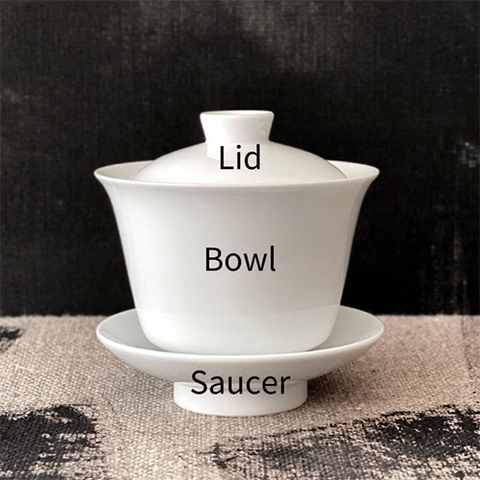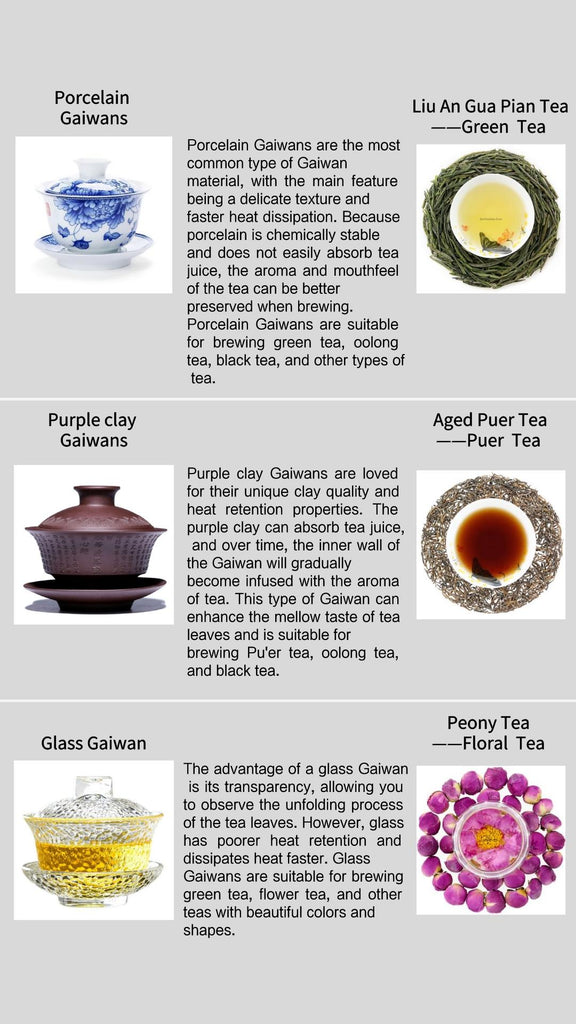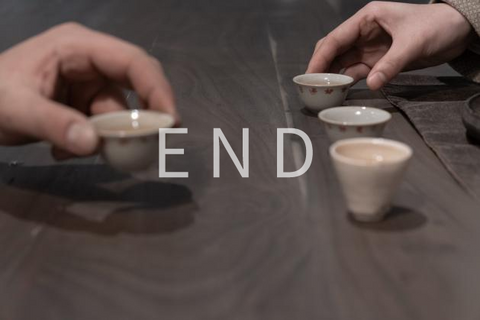36 products
-
Qingming Shanghetu Blue And White Porcelain Gaiwan
 Vendor:Qingming Shanghetu Blue And White Porcelain GaiwanUmi Tea Sets
Vendor:Qingming Shanghetu Blue And White Porcelain GaiwanUmi Tea Sets- Regular price
-
$49.98 USD - Regular price
-
- Sale price
-
$49.98 USD
Quick view
-
Magpie Lychee Blue And White Gaiwan
 Vendor:Magpie Lychee Blue And White GaiwanUmi Tea Sets
Vendor:Magpie Lychee Blue And White GaiwanUmi Tea Sets- Regular price
-
$49.98 USD - Regular price
-
- Sale price
-
$49.98 USD
Quick view
-
Polychrome Peony Porcelain Enamel Gaiwan
 Vendor:Polychrome Peony Porcelain Enamel GaiwanUmi Tea Sets
Vendor:Polychrome Peony Porcelain Enamel GaiwanUmi Tea Sets- Regular price
-
$49.98 USD - Regular price
-
- Sale price
-
$49.98 USD
Quick view
-
Enamel Polychrome Porcelain Goldfish Gaiwan
 Vendor:Enamel Polychrome Porcelain Goldfish GaiwanUmi Tea Sets
Vendor:Enamel Polychrome Porcelain Goldfish GaiwanUmi Tea Sets- Regular price
-
$49.98 USD - Regular price
-
- Sale price
-
$49.98 USD
Quick view
-
Enamel Porcelain Pink Lotus Gaiwan
 Vendor:Enamel Porcelain Pink Lotus GaiwanUmi Tea Sets
Vendor:Enamel Porcelain Pink Lotus GaiwanUmi Tea Sets- Regular price
-
$33.68 USD - Regular price
-
- Sale price
-
$33.68 USD
Quick view
-
Enamel Porcelain Flowers Gaiwan
 Vendor:Enamel Porcelain Flowers GaiwanUmi Tea Sets
Vendor:Enamel Porcelain Flowers GaiwanUmi Tea Sets- Regular price
-
$25.64 USD - Regular price
-
- Sale price
-
$25.64 USD
Quick view
-
Hand-painted Landscape Porcelain Gaiwan
 Vendor:Hand-painted Landscape Porcelain GaiwanUmi Tea Sets
Vendor:Hand-painted Landscape Porcelain GaiwanUmi Tea Sets- Regular price
-
$32.70 USD - Regular price
-
- Sale price
-
$32.70 USD
Quick view
-
Hand-painted Flowers And Birds Gaiwan
 Vendor:Hand-painted Flowers And Birds GaiwanUmi Tea Sets
Vendor:Hand-painted Flowers And Birds GaiwanUmi Tea Sets- Regular price
-
$21.98 USD - Regular price
-
- Sale price
-
$21.98 USD
Quick view
-
Enamel Porcelain Dragon Phoenix Gaiwan
 Vendor:Enamel Porcelain Dragon Phoenix GaiwanUmi Tea Sets
Vendor:Enamel Porcelain Dragon Phoenix GaiwanUmi Tea Sets- Regular price
-
$36.98 USD - Regular price
-
- Sale price
-
$36.98 USD
Quick view
-
Yixing Purple Clay Heart Sutra Gaiwan
 Vendor:Yixing Purple Clay Heart Sutra GaiwanUmi Tea Sets
Vendor:Yixing Purple Clay Heart Sutra GaiwanUmi Tea Sets- Regular price
-
$34.98 USD - Regular price
-
- Sale price
-
$34.98 USD
Quick view
-
Yixing Duan Ni Clay Handmade Frog Gaiwan
 Vendor:Yixing Duan Ni Clay Handmade Frog GaiwanUmi Tea Sets
Vendor:Yixing Duan Ni Clay Handmade Frog GaiwanUmi Tea Sets- Regular price
-
$59.98 USD - Regular price
-
- Sale price
-
$59.98 USD
Quick view
-
Ice Crack Ge Kiln Gaiwan
 Vendor:Ice Crack Ge Kiln GaiwanUmi Tea Sets
Vendor:Ice Crack Ge Kiln GaiwanUmi Tea Sets- Regular price
-
$31.47 USD - Regular price
-
- Sale price
-
$31.47 USD
Quick view
How to Brew Tea with a Gaiwan
Gaiwan Wonderland: Exploring the Art of Tea Ceremony and the Elegant Journey of Tea Brewing
Forget fancy teapots! The gaiwan, meaning 'lid-bowl' in Chinese, is a tea lover's dream come true. This three-piece brewing set made popular during the Ming dynasty features a bowl, lid, and saucer. There is no filter, with only the lid used to separate tea leaves from the brewed liquid. This is why brewing tea with a gaiwan is often called an art form, taking much practice and skill to perfect.

Commonly made of porcelain, glass, or clay, the Gaiwan is a centuries-old teaware still enjoyed today. The lack of a filter incites greater control and precision of the brewer and produces a rich, aromatic tea that hits much more fragrant notes than regular tea. If you want to elevate your tea experience, consider exploring the world of Gaiwan brewing.
Let's delve into how to brew tea with a gaiwan.
Why Use a Gaiwan

Despite its unfamiliar look for beginners, gaiwan is a fantastic tool for brewing tea. Not only is it practical, but it's also considered an elegant and beautiful way to prepare your favorite beverage. Here's why gaiwan deserves a spot in your tea-brewing essentials.
1. While there's a learning curve to avoid burning yourself with hot water, the gaiwan becomes user-friendly once you get the hang of it.
2. The gaiwan excels at re-steeping tea leaves. The vessel allows for quick pouring and small infusions, letting you observe the tea leaves as they release their flavor.
3. While often used for oolong, green, and white teas, the gaiwan handles a surprising range of variety. Black, yellow, some dark teas and even some herbals can all be brewed in this vessel. However, you should avoid teas with fine leaves because they tend to shed easily.
How to Select a Gaiwan

The gaiwan, your perfect tea-brewing accessory, comes in various materials and sizes. Choosing the right one depends on the tea you plan to brew.
Material Matters
● Porcelain: The most commonly used gaiwan are the ones made of porcelain. They are not only a classic choice for beginners, but also easy to clean and use. It is ideal for delicate teas like white tea, light oolongs, and fresh green tea. Porcelain's light color lets you admire the hues of infusion.
● Clay: Clay gaiwan is used for fermented teas like red tea (puerh) and aged oolong. These gaiwan release heat gradually, allowing the brews to infuse their full flavor and aroma in the hot water.
Size Considerations
Gaiwans are found in a wide variety of sizes and shapes. Normally their size ranges from 100 - 280 ml.
At UmiTeaSets, we offer gaiwan of various sizes. They have different filling capacities, which depend on your personal preference and also on the type of tea you want to brew in it.
Which Tea Works Best in a Gaiwan
The gaiwan, a versatile brewing essential, truly stands out at its work when it comes to certain types of tea. While it can be used for many, it's best suited for oolongs, white teas, puers, and Chinese black tea.
The thin walls of gaiwan promote gentle steeping, drawing out the infused flavors without scorching the leaves. This means the flavor stays intact for longer. Unlike teapots, gaiwan offers a clear view of tea leaves as they unfurl in the boiling water, releasing their taste and scent into it. Furthermore, you can also opt for multiple infusions as per your liking and the type of tea you choose.
It's important to note that gaiwan may not be the best tool for all tea types. For instance, strong black teas, like some Indian or Srilankan varieties, become overpowering and bitter when brewed in a gaiwan.
Essentials to Prepare Tea With Gaiwan
To brew gaiwan tea you will need:
1. Gaiwan (lidded cup)
2. Bowl ( for rinse and leaves)
3. Loose leaf tea
4. Hot water
Optional items include a tea tray to serve and teacups to pour your brewed tea.
Technique to Use a Gaiwan
Gaiwan, the brewing tea essential is not used commonly due to fear of burning fingers or the seemingly complicated tea-brewing method. With this step-by-step guide let's learn how to brew tea in a gaiwan:
● Warm Your Gaiwan

Before diving into full steep, begin the brewing process by pre-heating the Gaiwan. Heat your water to the perfect temperature for your chosen tea (around 185℉ for white tea, 190℉ for oolong, and boiling for pu-erh).
This hot water preheats the gaiwan, allowing the tea leaves to maintain their ideal temperature, and maximizing flavor extraction. Moreover, it also gives a quick rinse to the gaiwan and sweeps off any dust particles and residue.
● Measure Your Tea

After you discard the rinsed water from the gaiwan into a waste bowl, use a teaspoon or tea scoop to find the perfect amount of loose-leaf tea. The amount of tea you add to the gaiwan depends on both, how strong you like your tea and how much tea capacity the gaiwan holds. Furthermore, it also varies with the type of tea you're using.
A level teaspoon is great to start with but it eventually narrows down to your personal preference. Look for the detailed tea-specific guide before adding in any amount.
● Add Water to Tea Leaves

Adding water to tea leaves, also called 'Awakening the tea leaves' is a pre-infusion process. It releases the initial fragrance of the tea and allows the leaves to begin expanding.
Pouring hot water, just below boiling over the leaves, fills the gaiwan. With a quick swirl, you can remove any dust on the leaves and uncover the tea leaves' initial scent. Hence, this quick rinse serves a dual purpose and is a significant step to savor the aroma and wait for flavors to be discovered.
Immediately discard the water after a quick rinse and move on to the next step.
● The First Infusion

Now it's finally time to steep the leaves! Pour water heated to the perfect temperature for your chosen tea. Remember, different teas require different brewing temperatures.
Green teas typically require cooler water whereas oolongs and black teas can handle the hot water and benefit from being covered during steeping for a slightly longer duration of 45 seconds to 1 minute. This lets the flavor settle well into the water, infusing it with the aroma and taste of tea leaves, which enhances your tea experience.
After adding water for infusion, immediately cover the bowl with a gaiwan lid. This traps the steam inside, infusing water with a better aroma during steeping.
● Pour and Serve

Now, to pour the tea, use this simple technique to avoid burning your fingers as the body of the gaiwan has gotten hot by now. So, pinch the gaiwan rim with your thumb and middle finger, and press down on the lid knob with your other index finger. Now, in one smooth motion, tip the gaiwan inwards and forward, pouring into cups and serving your guests.
Use small Chinese cups for a better tea experience, each sip filled with aroma and delicacy. Moreover, a tea tray or table for serving purposes, makes the process look more appealing.
● Multiple Reinfusions
You might be surprised to know that, unlike tea bags, these high-quality loose leaves can be brewed multiple times. After you've infused it once, simply drain the remaining water and add more hot water to the gaiwan to get a fresh serving. With each infusion, increase the steeping time by about 15 seconds to compensate for the weaker leaves.
The number of reinfusions offered by each type of tea is different. For instance, you can get a good 4-5 steeps with oolong. However, don't forget that an overly long time of infusion with the same tea leaves causes the tea to turn bitter. So, to get the best flavor, avoid leaving the leaves unused for extended periods between these steeps.
So, prolong your tea session and enjoy the multiple infusions, each filled with the same aroma and freshness.
Gaiwan Brewing allows you to experience a dynamic journey of taste. You witness the leaves unfurl with each steeping and release the pleasant aroma into the water. Unlike single-steep methods, with our gaiwan, you can extract multiple infusions which ensures a delightful note that your tea has to offer.
Where to Find the Best Gaiwan
If you're on the lookout for high-quality, delicate yet unique gaiwan designs, Umiteasets is the right place for you.
Here, we offer a wide range of gaiwan in various designs and sizes, each of which is made to perfection. Their intricate detailing and versatility add to the uniqueness of our collection. We source our vintage teaware from reliable sources, known for their dedication to preserving the beauty of these pieces.
Browse through our website and take a look at our collection of high-quality gaiwan which will help you unlock the full potential of your tea stash.












